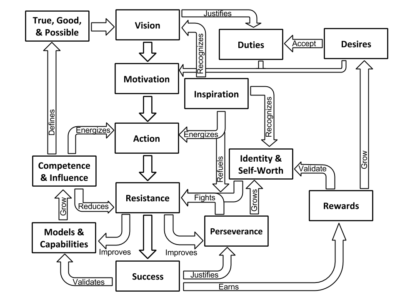There is an incredible diversity of positions and arguments. But underneath this variety are comparatively few causes, many of which rest on disagreement over fundamental concepts like good, right, and happy. Contemporary arguments are overwhelmingly instantiations of ancient disagreements in the sense that both would cease if such concepts were genuinely agreed upon.
Although all necessary disagreements terminate in conflicting axioms, passionate disagreements endure when several sets of such axioms are valuable despite being incompatible. The worth of essential systems, validated by empirical effectiveness and grounded in coherent positions that reduce to these axiom sets, impassion argument. Justifications grow in sophistication, but remain in tension because they point to irreconcilable truths.
Over the last eight posts I attempted to illuminate the most fundamental of such tensions; a tension I find latent in most arguments that, as long as it remains latent, reduces them to minor acts of refinement rather than advancement – in those rare cases when they rise above propaganda or derp. This is the tension about the inevitability of tension itself.
My argument consists of two substantially independent tracts which represent two sides of this tension: one that argues for the value of absolutes and another that argues for the limits to agreement on them. I have come to view both of these positions as axiomatic to the point that I am willing to call them laws:
Law of Absolute Belief: “Purpose and effectiveness rest on absolute belief.”
And:
Law of Plurality: “Universal agreement on absolutes is impossible.”
These seemingly paradoxical laws have disturbing implications and I did not come easily to their acceptance. But now that I have accepted them, I am not easily compelled to engage propositions that question them. Yet such propositions are ubiquitous. A major motivation for this series was to justify my reluctance to argue past a violation of these laws. Continue reading Laws of Absolute Belief and Plurality
